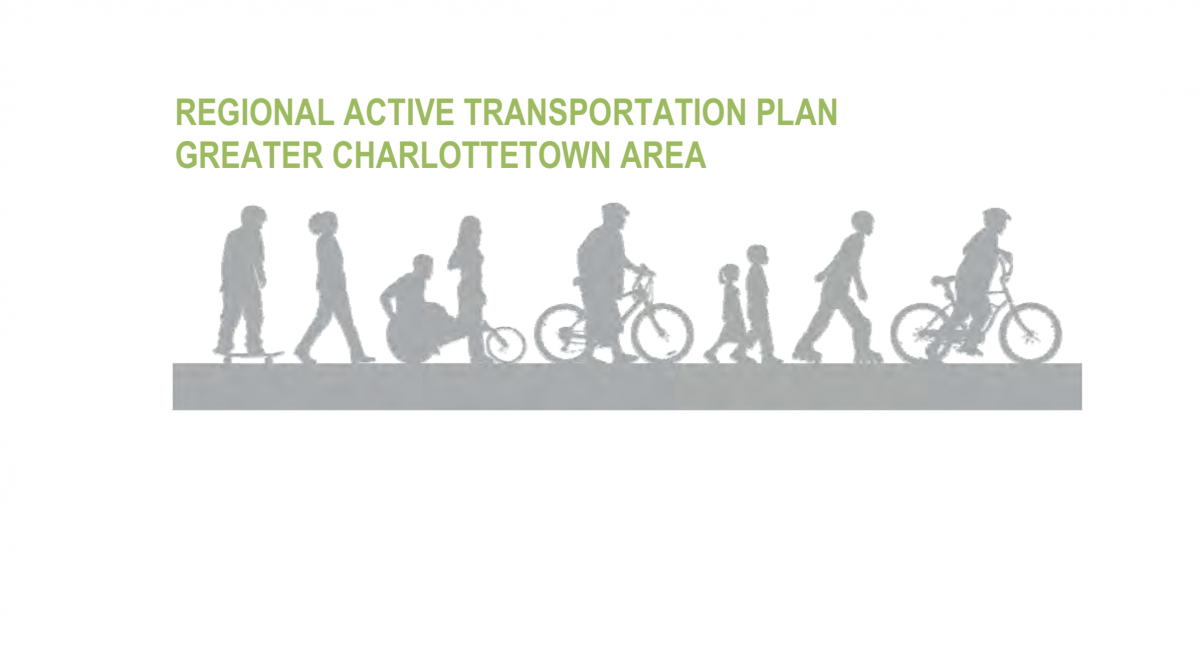
PEI Department of Transportation and Infrastructure Renewal; City of Charlottetown; Town of Cornwall; Town of Stratford; Cycling PEI; Tourism PEI; Tourism Charlottetown; Island Trails; Representatives from UPEI, Holland College, and the Eastern School District; community members with interest in active transportation and accessibility.
$17 million
Prince Edward Island Municipal Provincial Partnership: Regional Active Transportation Plan
Improving access to regional activity hubs and overcoming barriers
“Develop comfortable and attractive pedestrian and cycling facilities that will connect major activity hubs throughout Charlottetown, Stratford, and Cornwall” (PEI Department of Transportation and Infrastructure Renewal, City of Charlottetown, Town of Cornwall, & Town of Stratford, 2012, p.1).
Improving visibility of networks to increase their usage
The Regional Active Transportation plan was created in 2012 to develop an active transportation network and estimate its costs. This included: identifying major activity hubs; locating existing active transportation infrastructure; identifying current and planned local active transportation networks; recommending a regional active transportation network to connect the major hubs; and identifying design guidelines and costs.
The consultation process - created to ensure the plan’s local relevance - included public open houses; meetings and interviews with stakeholders; meetings with the Steering Committee and an Advisory Group; and presentations and discussions with staff and counselors. Information was gained on current conditions and issues; major activity hubs; locations where improvements for cyclists or pedestrians are needed; current programs that promote safety and use of active transportation; and potential partners.
Sidewalks, bikeways, and trails were found to be “lacking in quality, whether it was poor signs, street crossings, width, surface, or just awareness that they exist” (PEI Department of Transportation and Infrastructure Renewal et al., 2012, p. 19). Other concerns included safety, poor connections between high quality facilities, and accessibility for seniors and people with disabilities. The plan focuses on main streets and roadways that connect communities and provide access to regional activity hubs. One important aspect is to improve how paved shoulders are signed and marked as bike lanes because “the more visible the network, the more use it will get; the more users, the higher the demand for additional improvements” (PEI Department of Transportation and Infrastructure Renewal et al., 2012, p. 24).
The following unit costs of construction were taken into account to decide on the funding needed for the plan:
- construct concrete sidewalks, 1.8 m wide: $150,000/km
- construct asphalt multi-use trail, 3 m wide: $200,000/km
- upgrade or improve existing trails to 3m wide asphalt: $150,000/km
- sign and mark paved shoulders as bike lanes: $20,000/km
- construct on-street bikeways (bike lanes, segregated bike lanes, bicycle boulevards, etc.): $150,000/km.
Over a 15-year period, the Regional Active Transportation Network will cost approximately $17 million to construct. This is equivalent to an investment of $600,000 per year in Charlottetown, $200,000 per year in Cornwall, and $300,000 per year in Stratford. Potential funding sources are identified on page 27 and 28 of the plan.
Early success comes from the implementation of smaller improvements
As a result of the plan “the recommended Regional Active Transportation Network [will] consist of about 125 km of sidewalks, multi-use trails and bikeways expanding the existing active transportation network to about 200 km”.
Recommended actions in addition to the Recommended Active Transportation Regional Network consist of four major themes: create a visible network, pursue big ideas, support local plans, and work together. The PEI TIR et al. (2012) identifies that “big cost projects are important to plan for overcoming significant barriers, however, early success will come from the implementation of many smaller, realistic improvements” (2012, p. 29). Each recommended action includes a suggested timeframe for implementation, range of costs, as well as considerations, issues, and the needs being addressed.
As of 2019 Charlottetown has added 50 - 60 km of multi-use pathway. An extensive boardwalk for walking up to and around Victoria Park was refurbished and widened, and a bike path constructed. Confederation Trail, 270 km in total tip to tip, spans the entire length of province, and tourists can now bike directly from entry points to PEI such as the its ferries and Confederation Bridge. The Town of Cornwall now has bike paths. In the future the Trans Canada Highway will bypass Cornwall and the old TC highway will be redeveloped to include lanes for cycling. Lanes and paths now line 60 percent of the commute between Charlottetown and Cornwall. Although these are multi-use, they are used primarily for cycling.
When can we visit, PEI?

